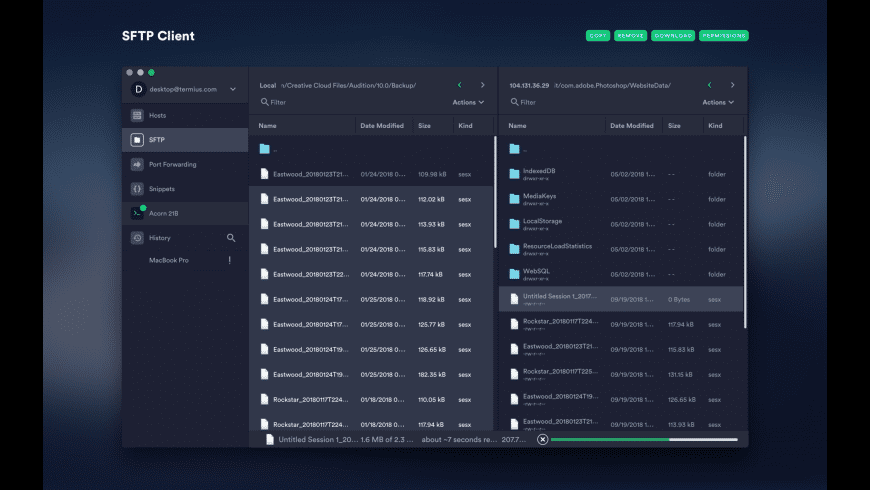

For each of his team members' devices, a key has already been generated by Termius, and its public part can be found in MultiKey. He wants his team members to use their personal keys because it would allow him to see who logs in to a server and when.ĭaniel doesn't have to ask the team to generate SSH keys and provide him with the public parts.

Daniel is not going to create individual accounts for each team member – they will be logging in to the same admin account.

Here is one of the scenarios of using this feature.ĭaniel's team, consisting of three engineers, will be logging in to several remote machines. On mobile devices, the snippet can be used to add keys to many servers at once.Īfter you set up MultiKey, as described further below, and place the team's public keys on the servers, the team will be able to successfully authenticate on the remote machines by selecting MultiKey during a connection.ĭifferent teams might find different uses for MultiKey. The snippet, unlike the key export option, does not simply insert new data into an authorized_keys file – it first removes any already existing MultiKey records. The public keys can be saved as an authorized_keys file or uploaded to a server, right from Termius, with the help of the key export option or a special, pre-made snippet (script). When viewing the contents of MultiKey, which you can do on the Keychain screen, you'll see a list of devices where your team members are currently logged in and the time when the key pair for a device was generated. When a team member logs out, the key generated on the device in use is removed. The private part of a key never leaves the device and is hidden, while the public part is synchronized and can be viewed by anyone in the team. The keys are generated on the team members' devices, one per device, when a team member logs in. MultiKey is a collection of SSH keys that Termius generates for your team according to specified requirements.


 0 kommentar(er)
0 kommentar(er)
